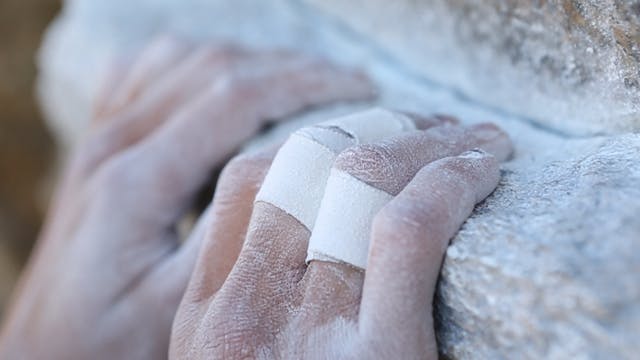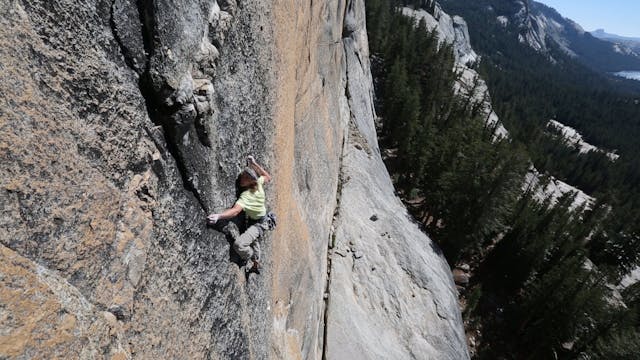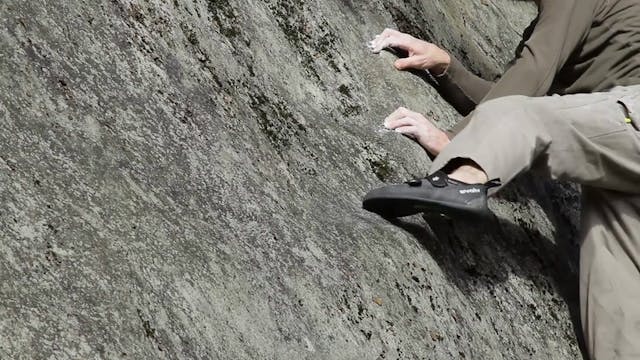Climbing Movement: 7. Down Palm
Climbing Movement
•
42s
A “down palm” can often be used on face climbs, on slab climbs, and on “mantles” for “mantling”.
You won't always have a “perfect edge” when climbing. However, a rounded or "sloping" feature can also be made positive for movement.
This is accomplished by pressing with your palm downwards, and then shifting your bodyweight onto your palm.
This down-palm technique is especially helpful when trying to mantle over a bulge or roof. For more on this, see our video on “Mantling”.
We hope you found this video helpful. Feel free to comment below with questions or thoughts!
Please remember, climbing is inherently dangerous. Climb at your own risk.
Up Next in Climbing Movement
-
Climbing Movement: 8. Using Chalk
Chalk is a vital component for most climbers.
Without chalk on your hands, the climber is undoubtedly climbing in sub-optimal conditions. Greasy hand sweat impedes the climber’s ability to have optimum friction, in order to gain upward purchase on the rock.
In the early climbing days, o...
-
Climbing Movement: 9. Edges for Hands
An “edge” typically describes a rock feature, with a flat surface.
Edges vary in length. Longer edges are called “rails”, while shorter ones are proper edges.
Edges also vary in width. Smaller edges are known as “crimps” or “crimpers”. These can be as thin as a dime edge. Large ones are re...
-
Climbing Movement: 10. Edging for Feet
“Edging” is a term that describes precise placement of the inner or outer edge of the climbing shoe.
Edges are small, in-cut, or somewhat positive footholds that lend themselves to accurate foot placements.
Edges are not always horizontal. More difficult routes have edges at different or...


